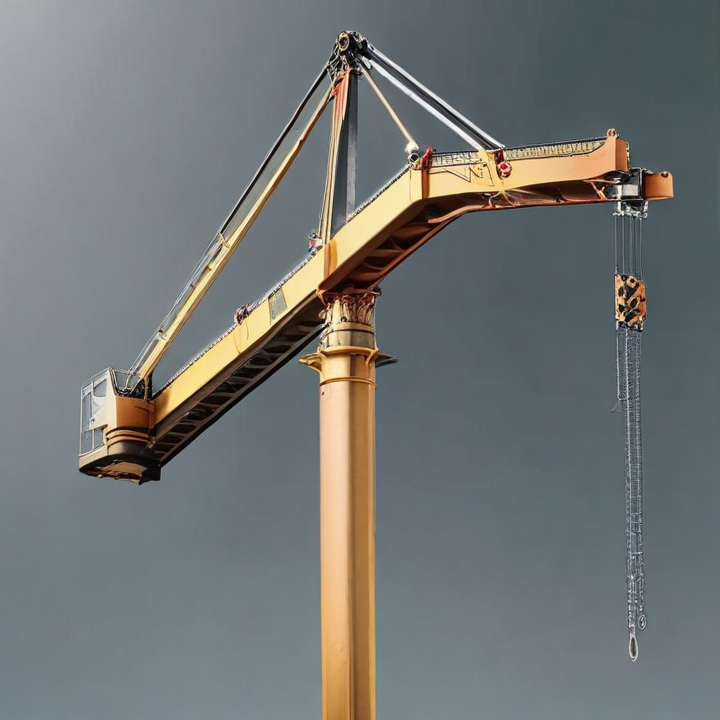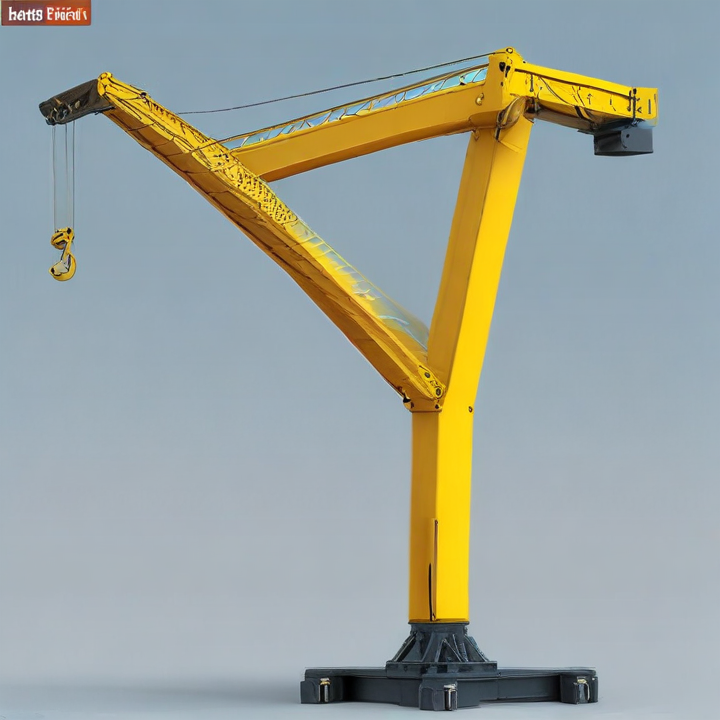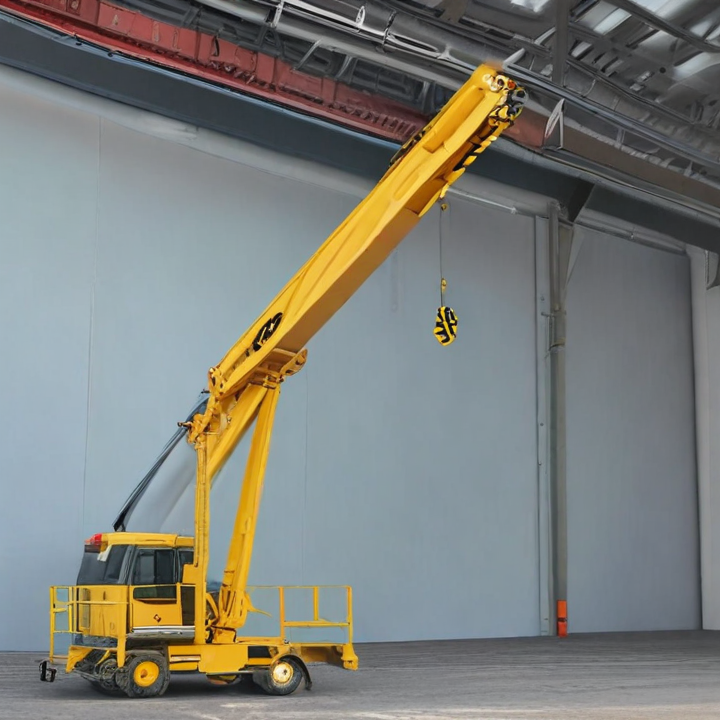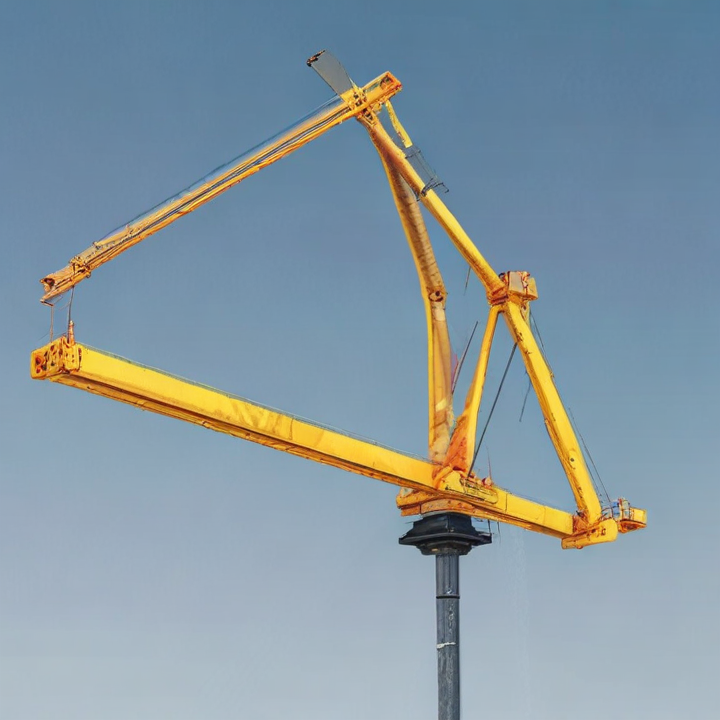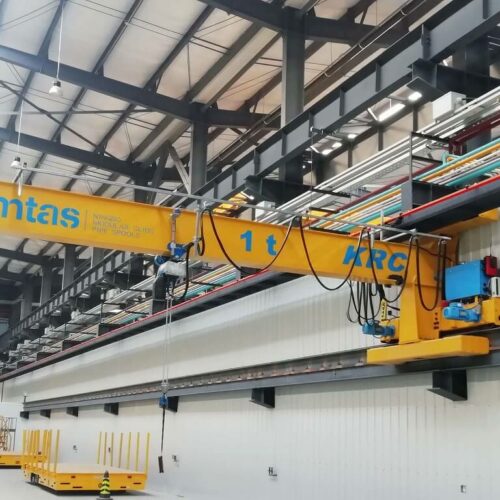light duty jib crane Safety Certifications
Safety certifications for light duty jib cranes are essential to ensure safe operation and compliance with industry standards. Here are the key safety certifications and standards that apply to light duty jib cranes:
1. OSHA Compliance (Occupational Safety and Health Administration):
– OSHA sets forth regulations for safe crane operation under 29 CFR 1910.179 and 29 CFR 1926.1400. Compliance with these standards is mandatory in the U.S., covering aspects like design, inspection, maintenance, and operation.
2. ASME B30.11 (American Society of Mechanical Engineers):
– This standard specifically addresses safety requirements for monorails and underhung cranes, including jib cranes. It provides guidelines for design, construction, installation, inspection, testing, maintenance, and operation.
3. ANSI (American National Standards Institute):
– ANSI standards, such as ANSI B30.2, offer additional safety and operational guidelines for cranes, ensuring they meet rigorous safety and performance criteria.
4. ISO 9001 (International Organization for Standardization):
– While not specific to cranes, ISO 9001 certification indicates that the manufacturer follows a recognized quality management system, which can enhance safety and reliability in crane manufacturing.
5. CE Marking (Conformité Européene):
– In Europe, jib cranes must meet the Machinery Directive 2006/42/EC. CE marking signifies compliance with EU safety, health, and environmental protection requirements.
6. FEM Standards (European Materials Handling Federation):
– FEM 1.001 and FEM 9.511 standards provide guidelines for the design, classification, and testing of cranes, ensuring they meet high safety and reliability standards.
7. CMAA (Crane Manufacturers Association of America):
– CMAA Specification 74 covers the construction, installation, and operation of jib cranes, emphasizing safe design practices.
8. Regular Inspections and Maintenance:
– Adherence to standards like ASME B30.11 mandates regular inspections and maintenance. These inspections ensure that the crane remains in safe operating condition and that any issues are promptly addressed.
9. Operator Training and Certification:
– Operators should be trained and certified according to OSHA and ASME standards. Proper training ensures that operators understand the crane’s safety features and operating procedures, reducing the risk of accidents.
By adhering to these certifications and standards, manufacturers and operators can ensure that light duty jib cranes are safe, reliable, and compliant with industry regulations.
List Reference Technical Parameters of “light duty jib crane”
Light duty jib cranes are specifically designed for lighter lifting applications. Below are some technical parameters typically considered when evaluating or specifying light duty jib cranes:
1. Lifting Capacity: Generally ranges from 50 kg to 2000 kg, depending on the model and manufacturer.
2. Span: The length of the jib arm or boom, typically between 2 meters to 8 meters.
3. Height Under Boom: The distance from the floor to the underside of the jib crane boom. This can range from 2 meters to 6 meters.
4. Slew Range: Denotes the rotation capability of the jib arm. Light duty jib cranes often feature a manual 180° to 270° rotation, but motorized options can offer a full 360°.
5. Mounting Options:
– Freestanding: Mounted on a concrete floor via a base plate.
– Wall-Mounted: Attached to an existing wall or column, ideal for saving floor space.
6. Boom Type: Can be of a fixed or telescopic type, with some models featuring adjustable boom lengths for added flexibility.
7. Material: Often made from high-quality steel, ensuring durability and stability.
8. Hoist Type: Electric chain hoists or wire rope hoists are commonly used, with variable speed controls for precise lifting.
9. Power Supply: Typically 220V/240V single-phase or 380V/415V three-phase power supply, depending on the hoist motor specifications.
10. Control System: Includes pendant control, radio remote control, or an integrated system for easy management of lifting operations.
11. Safety Features: Overload protection, emergency stop functions, end stop buffers, and anti-sway devices to enhance operational safety.
12. Working Environment: Designed to operate in various environments, including indoor and outdoor settings, but typically rated for non-corrosive and non-explosive atmospheres.
Understanding these parameters is crucial for selecting the right light duty jib crane that meets specific operational requirements and safety standards.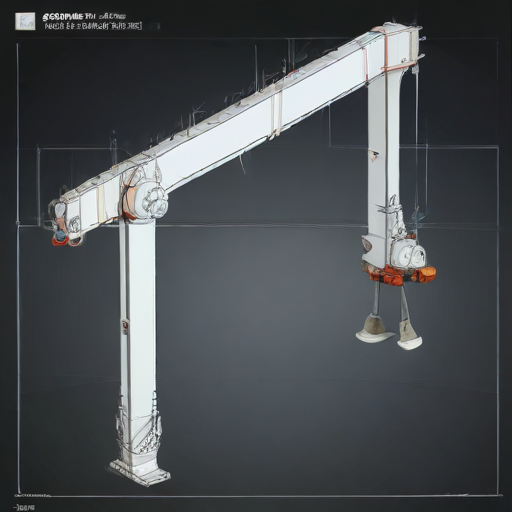
List Product features of “light duty jib crane”
A light-duty jib crane is a versatile and efficient lifting device designed for various material handling tasks. Here are the key features of a light-duty jib crane:
1. Capacity and Reach:
– Typically designed to handle loads up to 2 tons.
– Offers a range of spans and height options to fit different workspaces.
2. 360° Rotation:
– Some models provide a full 360° rotation, allowing comprehensive coverage of your work area.
– Others offer a limited rotation, such as 180° or 270°, depending on the installation and specific needs.
3. Ease of Installation:
– Available in different mounting options, including wall-mounted, floor-mounted, or portable designs.
– Simple installation process, reducing downtime and installation costs.
4. Durability:
– Constructed from high-quality steel and robust materials to ensure long-term reliability and safety.
– Powder-coated finishes resist corrosion and improve longevity.
5. Versatility:
– Suitable for diverse environments such as workshops, warehouses, and manufacturing plants.
– Ideal for tasks like loading/unloading, assembly work, and general material handling.
6. User-Friendly Operation:
– Manual or electric hoist options for lifting, depending on the model.
– Smooth, easy-to-operate swivel allows precise positioning of loads.
7. Compact Design:
– Occupies minimal floor space, making it ideal for confined areas.
– Integrates well with existing equipment and workflows without significant modifications.
8. Cost-Effective:
– Generally more affordable than heavy-duty cranes due to lower load capacity and simpler design.
– Low maintenance requirements reduce long-term operational costs.
9. Safety Features:
– Includes safety stops, travel limits, and load brakes to enhance safe operation.
– Designed to comply with safety standards and regulations.
10. Customization Options:
– Can be tailored with various accessories, such as specialized hooks, grabs, or spreader bars to meet specific needs.
In summary, a light-duty jib crane offers an efficient, adaptable, and cost-effective solution for lifting and moving materials in numerous settings. Its combination of durability, ease of use, and safety features makes it a valuable asset for businesses aiming to improve productivity and ergonomic handling.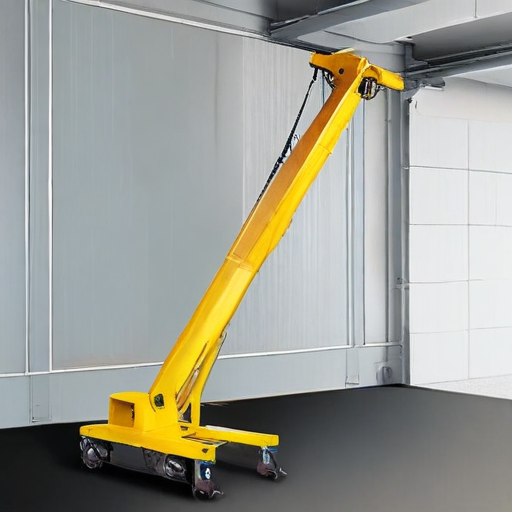
List Various Types of “light duty jib crane”
1. Wall-mounted Jib Crane: Bolted directly to reinforced concrete walls or columns, optimizing floor space with a 180-degree rotation.
2. Free Standing Jib Crane: As the name suggests, these cranes are free-standing and can rotate up to 360 degrees. They are suitable for both indoor and outdoor use.
3. Workstation Jib Crane: Designed for lighter applications, they have a lighter built and offer high mobility, ideal for assembly line operations.
4. Articulating Jib Crane: Designed with two arms to provide a wider range of motion. Ideal for reaching into inaccessible areas.
5. Mast Type Jib Crane: Should be mounted on the floor but require top brace to stabilize, are ideal for high lift jobs due to their minimal deflection.
6. Portable Jib Crane: As the name indicates, these are mobile and can be moved from one place to another. They are perfect for applications requiring temporary lifting solutions.
7. Column-mounted Jib Crane: Directly mounted on a column, they rotate up to 360 degrees, and are perfect where there is limited floor space or high ceilings.
8. Wall Travelling Jib Crane: They are installed parallel along the side of a wall or workstation and can move loads laterally along the rails.
Each type of these jib cranes is designed for specific applications, taking into consideration factors such as floor space, load capacity, and range of motion.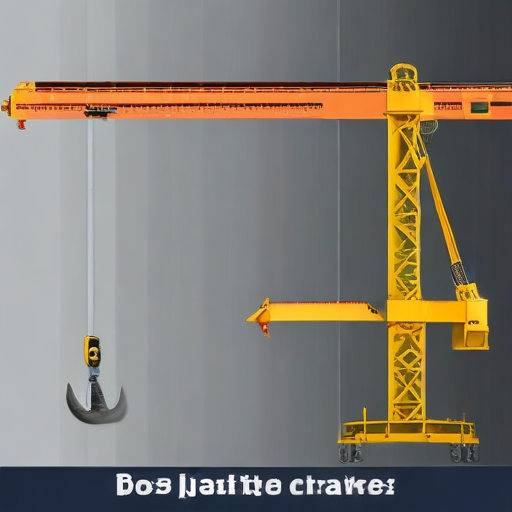
List Application of “light duty jib crane”
Light duty jib cranes are versatile material handling solutions suitable for various applications across multiple industries. Here are some of their primary uses:
1. Manufacturing and Assembly Lines: Light duty jib cranes are commonly used in manufacturing and assembly operations to lift and transport smaller components and parts, enhancing efficiency and reducing the risk of manual handling injuries.
2. Warehousing and Logistics: In warehouses, these cranes assist in the loading and unloading of goods, organizing inventory, and moving items to different storage locations, ensuring smooth logistical operations.
3. Workshops and Garages: Mechanics and technicians use light duty jib cranes to handle tools, automotive parts, and equipment, facilitating repairs, maintenance, and assembly tasks.
4. Construction Sites: On construction sites, these cranes help in the precise positioning of materials within confined spaces and support various construction activities, especially in interior and finishing works.
5. Retail and Distribution Centers: Light duty jib cranes streamline the handling of products, improving order fulfillment speeds and reducing the physical strain on workers in retail and distribution environments.
6. Shipyards and Maritime Operations: These cranes are used for lifting and positioning smaller loads and equipment on ships and in shipyards, supporting maintenance, repair, and outfitting tasks.
7. Food and Beverage Industry: In food processing plants, light duty jib cranes aid in the handling of ingredients, packaging materials, and equipment parts, maintaining hygiene and efficiency in operations.
8. Laboratories and Cleanrooms: In environments requiring precision and cleanliness, they are used to handle sensitive equipment and materials without contamination risks.
9. Textile and Electronics Industry: In these industries, light duty jib cranes assist in the manipulation of delicate fabrics or electronic components, ensuring careful handling to prevent damage.
10. Agriculture: They are used to manage farming equipment, feed sacks, and other materials, facilitating daily agricultural tasks.
These applications highlight the flexibility of light duty jib cranes in enhancing productivity and safety across a variety of sectors.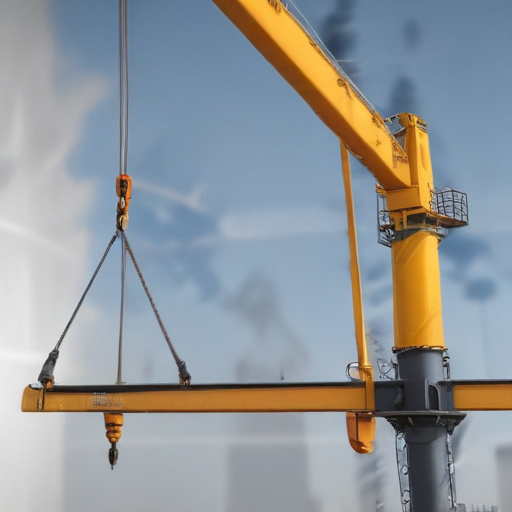
List Buyer Types of “light duty jib crane”
Light duty jib cranes are versatile material handling solutions used across various industries. The primary buyer types for light duty jib cranes include:
1. Manufacturing Facilities: These buyers need light duty jib cranes to move materials within production areas efficiently. The cranes help in lifting, rotating, and positioning loads, enhancing productivity.
2. Warehouse and Distribution Centers: These facilities use light duty jib cranes for picking, packing, and shipping processes. They are ideal for moving inventory from one area to another within the warehouse.
3. Workshops and Garages: Small workshops and automotive garages install light duty jib cranes to handle parts, tools, and assemblies, facilitating easier movement of heavy items without straining workers.
4. Construction Sites: On construction sites, these cranes assist in lifting and placing materials such as beams, panels, and equipment, ensuring safety and efficiency in handling heavy loads.
5. Marine and Docks: Light duty jib cranes are used on docks and ships for loading and unloading cargo. They are particularly useful in limited spaces due to their flexibility and range of motion.
6. Healthcare and Laboratories: These buyers use jib cranes to handle large or sensitive equipment, ensuring precision in placement and reducing the risk of damage or injury.
7. Agricultural Sector: Farmers and agribusiness use jib cranes to handle feed, equipment, and harvested crops, particularly in storage areas and barns.
8. Retail and Commercial Stores: Large retail and commercial outlets use jib cranes for stock handling, particularly in storerooms where space is tight and efficient movement is critical.
9. Municipal Services: Public works departments employ jib cranes for maintenance tasks, including handling streetlight poles, road signs, and utility covers.
10. Educational and Research Institutions: Schools, universities, and research facilities utilize these cranes in engineering workshops and laboratories to assist with experiments and projects.
By catering to a diverse range of applications, light duty jib cranes enhance efficiency, safety, and productivity across various environments.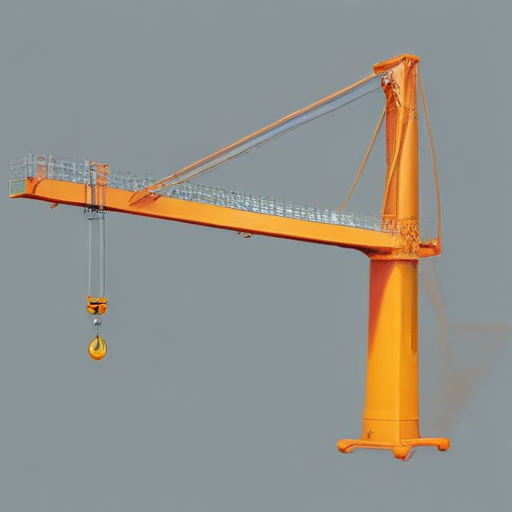
List “light duty jib crane” Project Types for Different Industries
Light duty jib cranes are versatile lifting devices useful across various industries for handling lighter loads efficiently. Here’s a look at different project types utilizing light duty jib cranes across various sectors:
1. Manufacturing:
– Assembly Line Support: Light duty jib cranes can facilitate the movement of components along an assembly line.
– Material Handling: Transferring materials between different stages of production.
– Maintenance: Assisting in maintenance operations by lifting heavy parts of machinery.
2. Automotive:
– Engine Assembly: Handling engines, transmissions, and other heavy components.
– Parts Storage: Moving auto parts in warehouses.
– Inspection Stations: Assisting in the lifting and positioning of vehicles or parts during inspection.
3. Warehousing & Distribution:
– Loading and Unloading: Assisting with the loading and unloading of goods from trucks.
– Order Fulfillment: Picking and placing products onto conveyor belts or pallets.
– Inventory Management: Handling heavy items in storage facilities.
4. Construction:
– Small Scale Lifting: Managing tools, equipment, and building materials on construction sites.
– Workshop Operations: Assisting in pre-fabrication tasks.
– Maintenance: Used in maintenance of construction equipment.
5. Food and Beverage:
– Processing Line: Moving ingredients or products in food processing plants.
– Packaging: Assisting in packaging lines by lifting and moving boxes.
– Storage: Handling containers and crates in storage areas.
6. Pharmaceutical:
– Cleanroom Applications: Handling sensitive materials in a controlled environment.
– Laboratory Support: Assisting in the movement of heavy lab equipment.
– Production Lines: Streamlining handling processes in production areas.
7. Marine and Ports:
– Loading Dock: Assisting in the movement of cargo from ships to dock and vice versa.
– Warehouse Storage: Handling and moving marine equipment or goods.
– Maintenance: Lifting parts during ship maintenance.
8. Telecommunications:
– Installation and Maintenance: Installing and maintaining equipment on towers or buildings.
– Component Handling: Managing spare parts in warehouses.
– Field Support: Lifting and positioning equipment on project sites.
Light duty jib cranes significantly enhance efficiency by providing safe and precise lifting capabilities across these varied project types, tailored to the specific needs of each industry.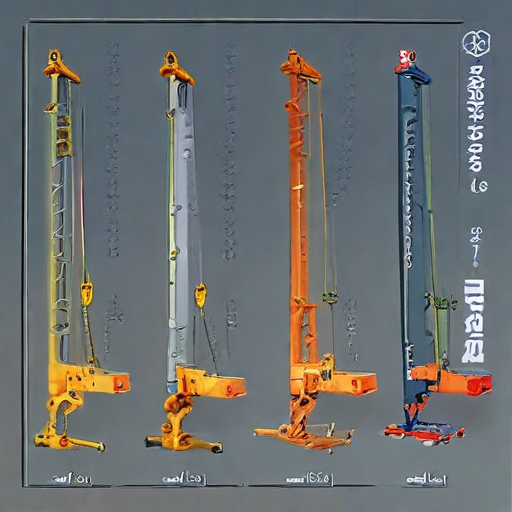
light duty jib crane Accessories Upgrades and Custom Manufacturing Options
Light Duty Jib Crane Accessories, Upgrades, and Custom Manufacturing Options
Accessories:
1. Hoists: Choose from electric, manual, or air-powered hoists based on load requirements and operational preferences.
2. Trolleys: Options include manual push, hand-geared, and motorized trolleys for different levels of maneuverability.
3. Festoon Systems: These systems manage cables and hoses, keeping them organized and out of the way.
4. Rotational Stops: Limits the jib’s rotation to prevent collisions with nearby structures or equipment.
5. Boom Locks: Secure the jib in a fixed position when not in use for added safety.
6. Maintenance Platforms: Facilitate easier and safer maintenance tasks.
Upgrades:
1. Automation: Integrate with control systems for automated operations, reducing manual intervention.
2. Remote Controls: Enhance safety and efficiency by allowing operators to control the crane from a distance.
3. Load Indicators: Provide real-time feedback on load weights to prevent overloading.
4. Variable Speed Drives: Offer precise control over lifting and lowering speeds, improving operational flexibility.
5. Anti-Sway Technology: Reduces load sway for more precise positioning and safer handling.
Custom Manufacturing Options:
1. Capacity and Reach: Customize the crane’s load capacity and reach to meet specific operational needs.
2. Mounting Styles: Options include wall-mounted, floor-mounted, or ceiling-mounted designs to fit various installation environments.
3. Materials: Choose materials like stainless steel for environments with specific hygiene or corrosion resistance requirements.
4. Environmental Adaptations: Special coatings and finishes for extreme temperatures, humidity, or corrosive environments.
5. Tailored Dimensions: Adjust boom length, height under boom, and base dimensions to fit unique workspace configurations.
6. Special Attachments: Custom hooks, grabs, and magnets for handling specific types of loads.
These options allow for a high degree of customization, ensuring that light duty jib cranes can be tailored to meet specific operational needs and enhance efficiency, safety, and performance.
List Quality Control and The Manufacturing Process of “light duty jib crane”
Quality Control and Manufacturing Process of Light Duty Jib Crane
#### Manufacturing Process:
1. Design & Engineering:
– Establish crane specifications including load capacity, jib length, and rotation angle.
– Use CAD software for precise blueprints.
2. Material Selection:
– Choose high-strength steel for durability.
– Procurement of materials ensuring compliance with industry standards.
3. Cutting & Shaping:
– Use CNC machines for cutting steel components to design specifications.
– Employ bending, milling, and drilling processes for shaping parts.
4. Welding & Assembly:
– Weld major components like the jib arm and columns.
– Assemble the mainframe ensuring all parts fit accurately.
5. Machining & Finishing:
– Machine critical parts like the bearings and the rotating mechanism.
– Apply anti-corrosion coatings and paint as per design specifications.
6. Inspection & Prep:
– Inspect welded joints for structural integrity.
– Prepare components for final assembly.
7. Electrical & Final Assembly:
– Install electrical components including control panels and wiring.
– Mount the hoist system and perform final assembly checks.
8. Testing:
– Conduct load tests to ensure capacity adherence.
– Perform function tests to check all mechanical and electrical systems.
#### Quality Control:
1. Incoming Material Inspection:
– Assess quality of raw materials.
– Verify supplier compliance with international standards.
2. In-Process Inspection:
– Ongoing checks during machining, welding, and assembly stages.
– Use of precision measuring tools to maintain dimensional accuracy.
3. Weld Quality Inspection:
– Non-destructive testing like ultrasonic or radiographic examination of welds.
– Visual inspection for surface defects.
4. Load Testing:
– Ensure the crane handles stated load capacity without failure.
– Verify structural stability under varying load conditions.
5. Electrical and Mechanical Testing:
– Check functionality of electrical components and safety systems.
– Ensure smooth operation of rotating parts and hoist mechanisms.
6. Final Inspection:
– Comprehensive review of the assembled product.
– Ensure compliance with design and safety standards before release.
By adhering to these stringent manufacturing and quality control protocols, the integrity and efficiency of light duty jib cranes are assured.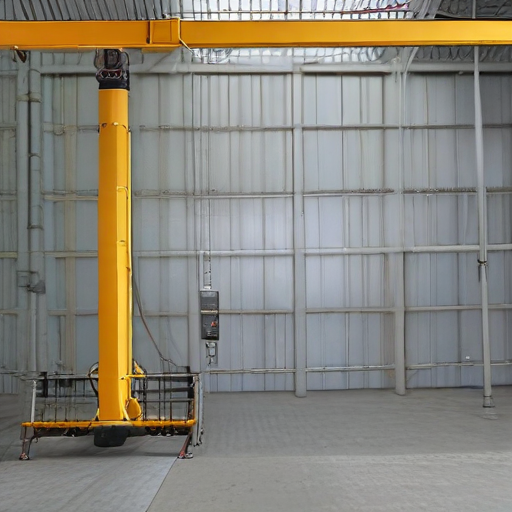
How to use “light duty jib crane”
A light duty jib crane is a versatile lifting device commonly used in various industries for light to medium load handling. Here’s a simple guide to using it effectively:
1. Pre-Operation Inspection
– Ensure Stability: Check that the crane is securely anchored or mounted.
– Inspect Components: Verify that all bolts, pins, and connections are tight. Check for any signs of wear or damage.
– Functional Checks: Test the hoist, trolley, and swivel function to ensure smooth operation.
2. Setting Up
– Position the Crane: Swing the jib arm to the desired location.
– Adjust Trolley: Move the trolley (if applicable) to the correct position on the jib arm.
– Choose Lifting Equipment: Select the appropriate hoist, hook, sling, or other lifting gear suitable for the load.
3. Lifting Operations
– Secure the Load: Properly attach the load to the hoist using approved lifting slings or accessories.
– Check Balance: Ensure the load is balanced and securely fastened.
– Lift Slowly: Begin lifting the load slowly to check for stability.
– Guide the Load: Use tag lines or guide ropes to maneuver the load and keep it controlled.
4. Moving the Load
– Swing the Arm: Slowly swing the jib arm to the desired location while keeping the load under control.
– Trolley Adjustment: Adjust the trolley position if you need to move the load along the jib arm.
5. Lowering the Load
– Position the Load: Maneuver the load to the desired location.
– Lower Gently: Slowly lower the load into place.
– Detach Carefully: Once the load is settled, carefully unhook the lifting equipment.
6. Post-Operation
– Return to Safe Position: Swing the jib arm and trolley to their resting positions.
– Inspect for Wear: Post-operation checks for any wear or damage to the crane.
– Report Issues: Document and report any anomalies or issues found.
Safety Tips
– Training: Only trained personnel should operate the crane.
– Load Limits: Never exceed the rated capacity of the crane.
– Area Clearance: Ensure the area is clear of obstructions and unauthorized personnel.
By following these steps, you can effectively and safely utilize a light duty jib crane in your operations.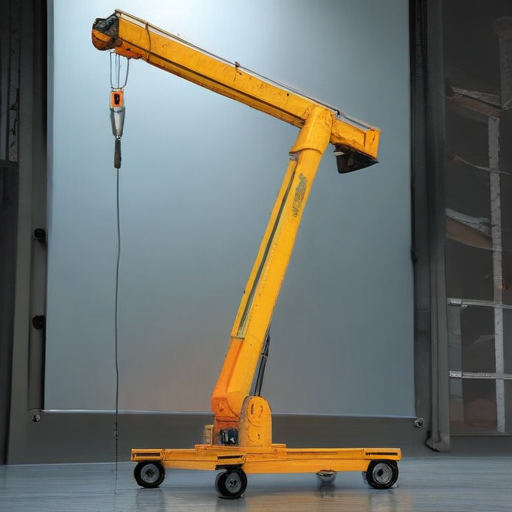
“light duty jib crane” Comparative Analysis
Light duty jib cranes are valuable lifting solutions used across various industries for material handling. Let’s conduct a comparative analysis focusing on three key areas: load capacity, versatility, and installation.
1. Load Capacity:
Light duty jib cranes generally support loads up to 2 tons. Their capacity differentiates them from heavy-duty models, which can handle substantially greater weights. For instance, a 0.5-ton unit is ideal for small manufacturing tasks, while a 2-ton model can efficiently manage larger objects in more demanding settings. Although their load capacity is significantly lower than heavy-duty jib cranes, light duty models often find ample utility where less intensive lifting is required.
2. Versatility:
Light duty jib cranes are praised for their versatility. They typically feature an articulated arm and can rotate up to 360 degrees, facilitating precise movement and positioning of materials. They come in several types: wall-mounted, floor-mounted, and articulating. Wall-mounted units are particularly advantageous for limited floor space, whereas floor-mounted cranes offer greater flexibility in placement. Their versatility makes them suitable for diverse applications, including assembly lines, repair shops, and warehouses.
3. Installation and Maintenance:
Installation of light duty jib cranes is relatively straightforward, requiring fewer structural modifications compared to their heavy-duty counterparts. Many models can be bolted directly to existing floors or walls without significant reinforcements, making them cost-effective. Routine maintenance is typically easier and less frequent due to lighter loads and less complex mechanisms. However, it’s essential to conduct regular inspections to ensure safe operation and longevity.
In conclusion, while light duty jib cranes have lower load capacities than heavy-duty variants, they excel in versatility and ease of installation. Their wide range of applications in various industries underscores their practicality for tasks involving lighter loads.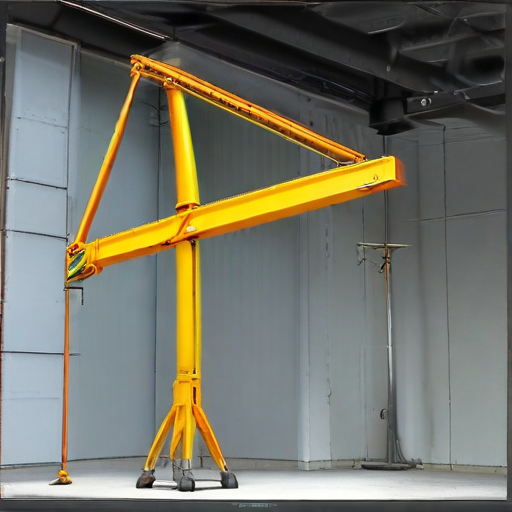
“light duty jib crane” Warranty and Support
Warranty and Support for Light Duty Jib Crane
Warranty:
Our light duty jib cranes are backed by a robust warranty that underscores our commitment to quality and customer satisfaction. Each crane comes with a standard one-year warranty covering all manufacturing defects and parts. This warranty period begins from the date of delivery and ensures that any malfunction or defect in materials or workmanship will be addressed promptly. For added peace of mind, extended warranty options are available upon request, ensuring long-term protection for your investment.
Conditions:
1. The warranty is valid only when the crane is used under normal working conditions and as per the provided user manual.
2. Any modification or unauthorized repairs void the warranty.
3. Wear and tear items such as brakes and cables are excluded.
4. Prompt reporting of any issues within 30 days of noticing a defect is required for warranty claims.
Support:
Our customer support team is dedicated to providing exceptional service throughout the lifetime of your jib crane. Support is accessible via phone, email, and online chat, ensuring that you can reach us through your preferred communication channel.
Services Offered:
1. Installation Assistance: Expert guidance and resources to facilitate smooth installation.
2. Technical Support: On-call engineers and technicians ready to troubleshoot and resolve any operational issues.
3. Maintenance Services: Scheduled maintenance packages to keep your jib crane in optimal condition.
4. Training Programs: Comprehensive training sessions for your team on the safe and efficient use of the crane.
Response Time:
We pride ourselves on quick response times. Most technical queries are addressed within 24 hours, while on-site support can typically be arranged within 48 hours, depending on location.
With our comprehensive warranty and dedicated support, you can be confident in the reliability and longevity of your light duty jib crane.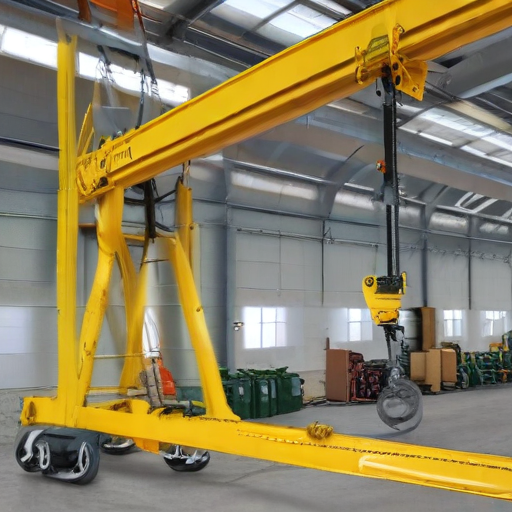
List “light duty jib crane” FAQ
Light Duty Jib Crane FAQ
1. What is a light duty jib crane?
A light duty jib crane is a type of crane designed for handling light loads, typically up to 2 tons. It’s commonly used in workshops, manufacturing, and assembly lines for lifting and moving materials within a fixed radius.
2. What are the main components of a light duty jib crane?
The main components include:
– Jib arm: The horizontal beam that supports the load.
– Column or wall mount: The vertical structure that supports the jib arm.
– Hoist: The lifting mechanism attached to the jib arm.
– Trolley: The mechanism that allows the hoist to move along the jib arm.
3. How does a light duty jib crane operate?
It operates by rotating the jib arm around a vertical axis, allowing the hoist to lift and move loads within the crane’s coverage area. The rotation can be manual or motorized.
4. What are the benefits of using a light duty jib crane?
– Versatility: Ideal for various light lifting tasks.
– Space-saving: Compact design suitable for small workspaces.
– Ease of use: Simple to operate with minimal training.
– Cost-effective: Lower cost compared to heavy-duty cranes.
5. What are the installation options for light duty jib cranes?
They can be:
– Floor-mounted: Secured to the floor using a base plate.
– Wall-mounted: Attached to a wall or existing structure.
– Ceiling-mounted: Suspended from the ceiling for overhead use.
6. What safety measures should be considered?
– Regular inspection and maintenance.
– Proper training for operators.
– Use of appropriate load limits.
– Ensuring the crane is securely mounted.
7. What industries typically use light duty jib cranes?
They are used in manufacturing, warehousing, automotive repair, and any industry that requires efficient material handling for light loads.
8. Can a light duty jib crane be customized?
Yes, they can be tailored to specific needs, including variations in height, arm length, and load capacity.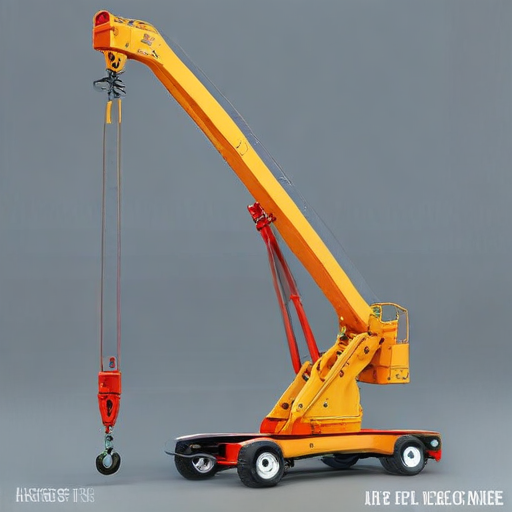
Top 10 FAQ with answer about light duty jib crane for Buyer Sourcing from China
1. What is a light-duty jib crane?
A light-duty jib crane is a type of overhead lifting equipment designed for short, repetitive lifting tasks. It consists of a horizontal jib or boom that supports a hoist, which can rotate around a fixed column or wall mount.
2. What are the typical applications?
These cranes are ideal for workstations, assembly lines, loading docks, and warehouses. They are commonly used for lifting light to moderate loads.
3. What capacities do light-duty jib cranes offer?
The lifting capacity typically ranges from 100 kg to 2 tons, depending on the model and manufacturer.
4. What types of jib cranes are available?
There are several types, including wall-mounted, floor-mounted (free-standing), mobile, and articulated jib cranes. Each type serves different spatial and operational requirements.
5. What materials and construction types are used?
Light-duty jib cranes are usually made from high-strength steel and feature durable welding and finish coatings to prevent corrosion and wear.
6. What are the key specifications to consider?
Buyers should evaluate load capacity, jib length, rotation (degrees), lifting height, and installation requirements. Power supply and control options are also important considerations.
7. Can these jib cranes be customized?
Yes, many manufacturers offer customizations, including specific jib lengths, hoists, trolleys, electrical systems, and mounting options, to better fit individual needs.
8. What is the average lead time for sourcing from China?
Lead times may vary, but typically range from 4 to 8 weeks, including manufacturing and shipping. It is advisable to check with the supplier for precise timelines.
9. What certifications are important?
Look for cranes that meet international standards such as ISO, CE, and ANSI. Verification of these certifications ensures safety, quality, and compliance.
10. What should be considered for shipping and installation?
Evaluate costs, import duties, and delivery timelines. Additionally, ensure you have the expertise or assistance for proper installation and setup to guarantee safe operation.

